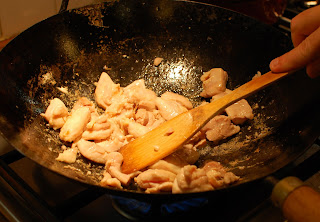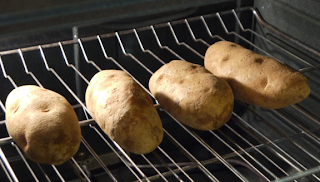Toasting is also a common method of making stale bread palatable. Toast is often served with butter, cheese, marmalade, or any number of other toppings, thereby making an open-faced sandwich. There are several ways to make toast. You can make toast is a typical household toaster which is best for fewer slices, but to make more you can lay the slices of bread out on a cookie sheet and place in a 350 degree oven for 5-10 minutes each side. The thickness of the bread determines how long it should bake. Check frequently to ensure desired doneness. You can also broil the bread, but this is a bit tricky and is best done for open faced sandwiches or to melt ingredients that are being served on the toast. You can toast bread in a pan on the stove. First melt ½ teaspoon of butter in the pan and coat bottom of pan, then place bread slice in the pan. After the first side is toasted, add another ½ teaspoon of butter to the pan and coat then brown the other side. Lastly, you can grill the bread. Lightly coat bread slices with olive oil and place on the grill, turning constantly until desired color is achieved.
 The word “toast" is also used to describe the tradition of honoring a person or occasion with a drink. Europeans toast and clink glasses whenever possible, and we're seeing it more and more in America. From simple clinking of glasses with a friend to clinking all around in a crowd, cheery shouts of “Salud,” “Cin Cin,” “Skoal” and “Proost” abound. It is always good manners to look the holder of the other glass directly in the eye before you take a sip. More formal toasting is generally made by the host to an honored guest, but recently it has been extended to the host by a guest. What is said in a toast matters less than how it is said. For a toast to sound as if it just came to you in an affectionate flash, it will have to be prepared ahead of time. Know your message, how to open, and how to close. A quote is always nice. Be cheery, to the point, short and sweet. Lastly, mean what you say! If a toast isn't sincere, everyone will know it.
The word “toast" is also used to describe the tradition of honoring a person or occasion with a drink. Europeans toast and clink glasses whenever possible, and we're seeing it more and more in America. From simple clinking of glasses with a friend to clinking all around in a crowd, cheery shouts of “Salud,” “Cin Cin,” “Skoal” and “Proost” abound. It is always good manners to look the holder of the other glass directly in the eye before you take a sip. More formal toasting is generally made by the host to an honored guest, but recently it has been extended to the host by a guest. What is said in a toast matters less than how it is said. For a toast to sound as if it just came to you in an affectionate flash, it will have to be prepared ahead of time. Know your message, how to open, and how to close. A quote is always nice. Be cheery, to the point, short and sweet. Lastly, mean what you say! If a toast isn't sincere, everyone will know it.















